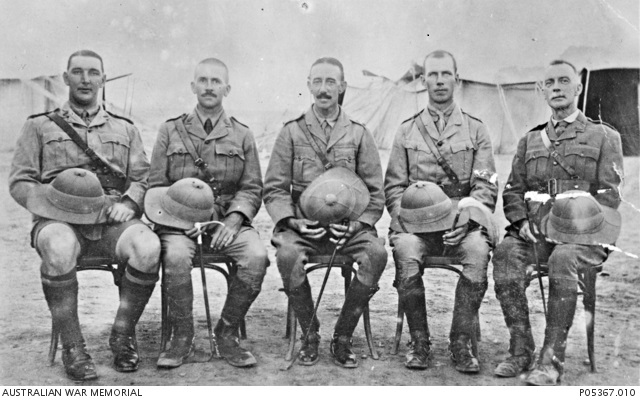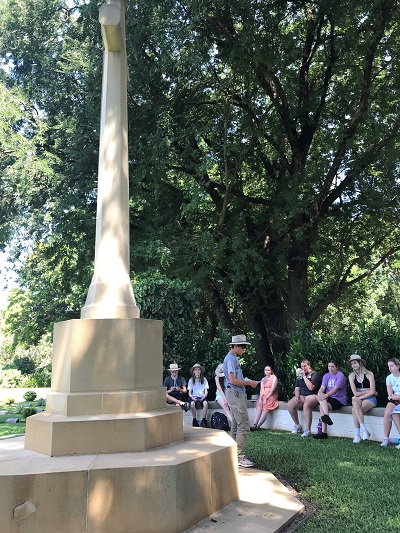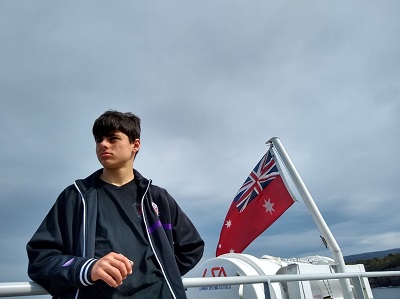
Divisions
-
Community Partnerships and Priorities
- Aboriginal Partnerships
- Child and Youth Wellbeing
-
Community Policy and Engagement
- Advisory groups
- Centenary of ANZAC
- Companion Card Program
- Concessions Guide
- Prevention of Family and Sexual Violence
- International Women's Day
- Frank MacDonald Memorial Prize
- Significant Tasmanian women
- Tasmanian Honour Roll of Women
- Women on Tasmanian boards and committees
- Veterans Programs
- Seniors Card
- Tasmanian Carer Action Plan
- Older Tasmanians
- LGBTIQA+ Tasmanians
- Volunteering
- Multicultural Tasmanians
- Food Relief to Food Resilience
- People with Disability
- Women
- Community and Disability Services
- Community Grants
- Contact
- Digital Strategy and Services
- Office of Local Government
- Office of Parliamentary Counsel
- Office of Review and Evaluation
- Office of the Secretary
- Resilience and Recovery Tasmania
- Corporate and Government Services
- Policy Division
- Service Tasmania Unit
- State Service Management Office
Contact Details
By phone
Find the number of a specific division or office to contact them directly or call Service Tasmania on 1300 135 513.
Our staff
Use the Tasmanian Government Directory to find staff contact details
Social media
Follow our social media accounts to keep up to date with specific programs and initiatives.
Major Edward Fowell Martin

Photo: 1915 Headquarters officers, 17th Battalion taken outside a tent probably in Egypt. Identified from left: Captain Clive Nigel Smith, MO; Major Edward Fowell Martin, SIC; Colonel Henry Arthur Goddard, Commanding Officer; Captain Arthur Balfour Douglas Brown, Adjutant; Major George Robert Short, QM.


Photos above: Noah Karakyriakos, of Kingston High School, researched Major Edward Martin for the Frank MacDonald Memorial Study Tour 2022.
About Major Edward Martin
Edward Fowell Martin was born on 22 August 1875 in Launceston, Tasmania. His family would then move to New South Wales where he attended King’s College in Goulburn. His first job was as an accountant for a bank before taking up a job at a wood breaking firm. After deciding these jobs were not for him Martin joined the Australian Army Service Corps as a private in 1898. It was approximately five years until he was commissioned. Then one year before the war broke out, he reached the rank of Major.
When the first world war began Martin joined the Australian Naval and Military Expeditionary Force (AN&MEF). He travelled to Papua New Guinea on the HMAS Berrima to take the German colony in the North of New Guinea. When he arrived, he led the siege of Toma on 14 September 1914. This was an operation to catch the last of the German leadership and soldiers stationed there. He managed to do this without a single casualty on both sides using an artillery piece that the German defenders could not counter. With the fall of the German colony in the north, Martin was made the district administrator of the former colony until February 1915. Martin then returned to Australia where the AN&MEF was then disbanded on the 4th of March. Many soldiers who were a part of the AN&MEF described Martin as a very friendly commander and one who cared a lot about the soldiers under his command.
17th Battalion
Martin and the 17th Battalion were sent to Egypt to help them defend against the Ottoman empire. He would later become 2nd in command for the battalion. The 17th Battalion and Martin were then sent to Gallipoli, and they arrived in Anzac Cove on 19 August. Martin and the 17th Battalion were involved in the battle of Hill 60 where they sustained many casualties. He received a handwritten congratulatory message from British Commander General Birdwood. After this, the 17th Battalion took over Quinn’s Post. However, on 13 September, he contracted dysentery and was sent to Egypt to recover. He would later be sent back to Gallipoli on 8 December for a short time before the evacuation of Gallipoli.
The 17th Battalion and Martin departed on the 23 March 1916 from Alexandria to Marseilles, France. He commanded the 17th Battalion and was promoted to the rank of Lieutenant Colonel. Upon arriving at the Western front the Battalion would be committed to Pozières. The Battalion sustained heavy casualties however they remained in the line and participated in the capture of Pozières. Due to Martin’s performance at the battle, he would be awarded a Distinguished Service Medal.
Martin was evacuated from the front on the 23 December 1916 due to contracting the flu. He would later return to the 17th Battalion two months later. When the Germans launched a counterattack at Lagnicourt in April, Martin’s headquarters was involved in the battle. Then on 20 September at Menin Road, he used a shell hole on the front line to supervise the defence effort. This perfectly displays Martin’s bravery and commitment to his duty, that he would put his own life at risk just to make sure the defensive lines would hold. After this Martin was made a Companion of the Order of St Michael and St George and made a brevet lieutenant colonel in the AMF.
Later on 9 March 1918 Martin was given temporary command of the 7th Brigade and was promoted to temporary Colonel on the 29th of March. He relinquished command of the 7th Brigade and moved to the 5th Brigade. On 28 June, he was appointed temporary Brigadier General and made a Colonel in the AMF on 9 July.
On 31 August under the command of Martin, the 5th Brigade took Mont St Quentin the capture of this by the men of the 2nd division which were a part of the 5th Brigade was widely regarded as one of the finest feats of the war. For his part in the fighting, he was made a Companion of the Order of the Bath. At the end of the war, Martin returned to Australia where he would retire from the AIF.
In 1924 Martin moved to Perth, Western Australia where he took up a job as an accountant for the West Australian newspaper. Later in 1932, he was appointed sergeant at arms for the Western Australian legislative assembly. He remained in this role for the next 18 years. When World War Two began he helped to organise the Volunteer Defence Corps in Perth.
Martin was an active member of the Returned Sailors' and Soldiers' Imperial League of Australia (now the RSL) and was a custodian of the Perth war memorial. He died on 22 September 1950 at the age of 75.
